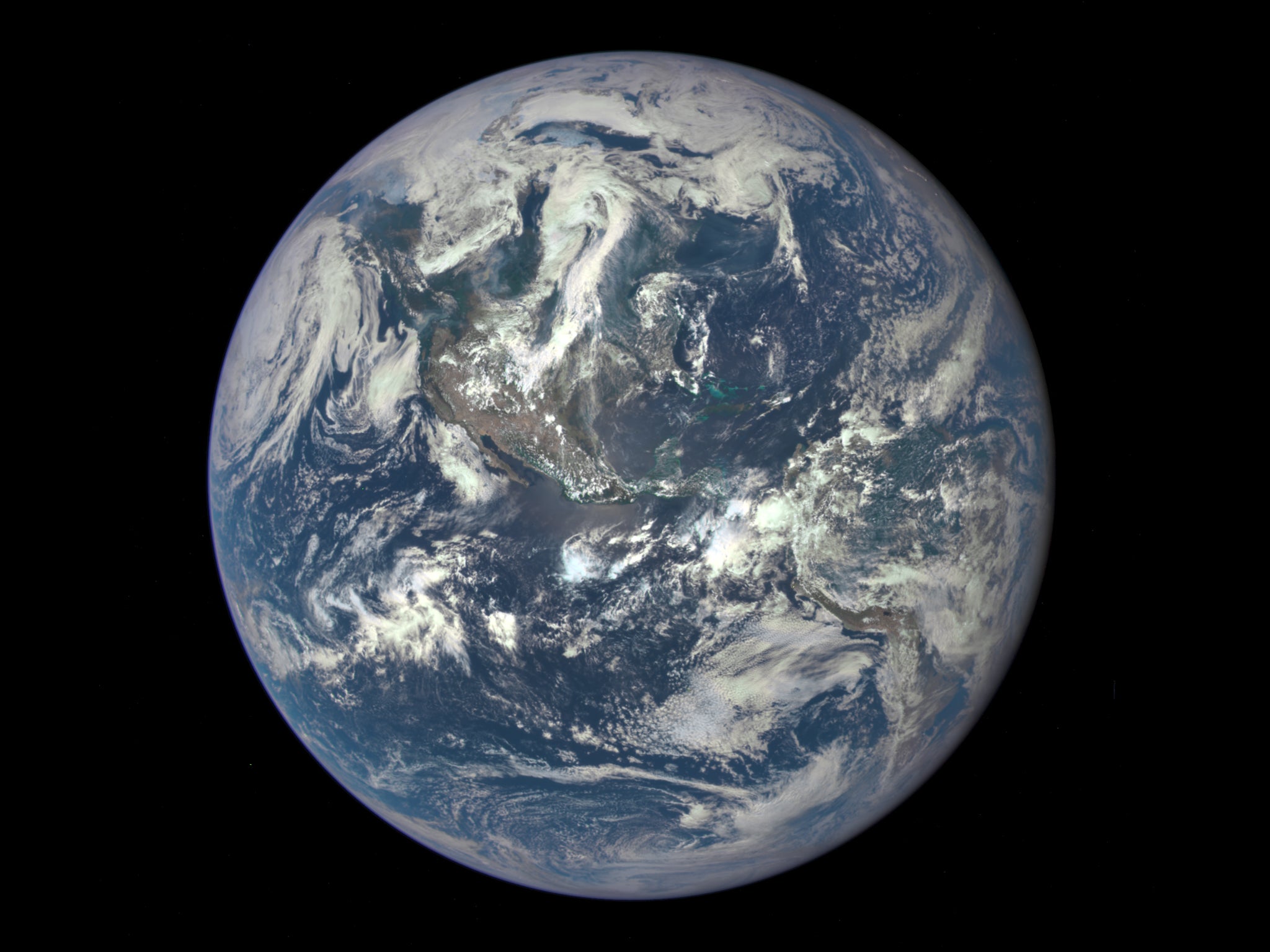Nasa releases first picture of the whole Earth taken in 43 years
All of the pictures the agency released since 1972 that claimed to show the whole planet were actually stitched together

Your support helps us to tell the story
From reproductive rights to climate change to Big Tech, The Independent is on the ground when the story is developing. Whether it's investigating the financials of Elon Musk's pro-Trump PAC or producing our latest documentary, 'The A Word', which shines a light on the American women fighting for reproductive rights, we know how important it is to parse out the facts from the messaging.
At such a critical moment in US history, we need reporters on the ground. Your donation allows us to keep sending journalists to speak to both sides of the story.
The Independent is trusted by Americans across the entire political spectrum. And unlike many other quality news outlets, we choose not to lock Americans out of our reporting and analysis with paywalls. We believe quality journalism should be available to everyone, paid for by those who can afford it.
Your support makes all the difference.Nasa has released the first picture of the Earth that it has taken in 43 years.
The picture, which has come from a camera on board the Deep Space Climate Observatory (DSCOVR), is the first picture of the whole Earth that has been seen since 1972. All of the pictures since then have been produced by stitching together different pictures into a full image of the globe.
The new picture is a composite, of three separate images, but each of those images showed the whole planet. The camera takes ten images through the colour spectrum — going all the way from ultraviolent to infrared — and to make the new picture Nasa combined the red, green and blue pictures.
The photo was taken on July 6, 2015, and mostly shows North and Central America. It was taken by Nasa’s Earth Polychromatic Imaging Camera (EPIC), which is a four megapixel camera shooting through a telescope.
The blue tint that can be seen mostly around the edge of the planet comes from the way sunlight is scattered by air molecules. The EPIC team hopes to remove those effects from future images, Nasa said.
Those pictures will help Nasa, along with the National Oceanic and Atmospheric Administration (NOAA) and the US Air Force, to monitor solar winds in real time so that space weather forecasting can be improved.
The first picture was taken from Apollo 17 in 1972, when Nasa last sent humans to the moon. It remains the only picture only taken of the whole Earth by a human being — and, as the Atlantic reports, all three of the astronauts on the mission claim to have taken the photo.
The new cameras will soon start sending down data regularly, which will allow it to send a new picture of the Earth every day, which is set to start in September 2015. That will let Nasa study the Earth’s daily changes, and the agency will make them available to the public on a special page, 12 to 36 hours after they are taken.
Join our commenting forum
Join thought-provoking conversations, follow other Independent readers and see their replies
Comments